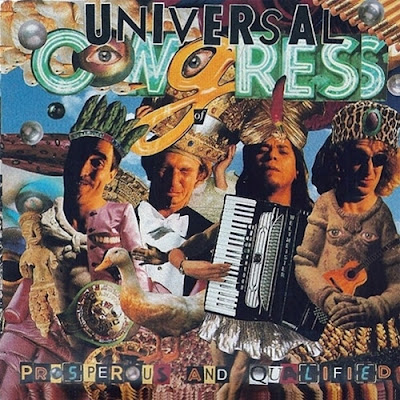Sejam bem vindos os amantes da música! Aqui você encontra dezenas de gêneros musicais pra curtir à vontade! Escolha seu artista e/ou banda favoritos e baixe (download) o álbum de sua preferência. VISITE E SEJA UM SEGUIDOR! Opção musical é isso!
Métrica
23 de dezembro de 2024
22 de dezembro de 2024
BIG LEON BROOKS - Let's Go To Town
ELECTRIC BLUES
1983
Bitrate 256 kbps
[cd quality]+
Bitrate 256 kbps
[cd quality]+
Leon Brooks foi influenciado muito pouco pelos funk, blues-driven guitarra dos anos 60 e 70. Leon foi rápido em apontar que havia melhores músicos da harmônica anos atrás. "Tivemos muito poucos jogadores da harmônica de volta, então, que eram bastante muito bom .... eles tinham mais peso, mais de tom. Você tem que realmente explodir de dentro; você tem que ter esse sentimento para a música, música dos azuis. Este é algo que você não encontrará muitos tocadores de harpa com hoje". "The Big Man", como ele foi apropriadamente chamado ao redor de sua casa (muitas vezes ele usava camisas com "Big" bordado no bolso em vez de seu nome), começou a tocar harpa quando ele tinha seis anos de idade. Crescendo em Sunflower, Mississippi, ele teve a oportunidade de aprender com os mestres: Sonny Boy Williamson (Rice Miller), Elmore James, Boyd Gilmore e Charlie Booker. "Eu fui criado em torno desses caras", lembrou ele, "mas eu realmente aprendi muito com o rádio, também." Mudando-se para Chicago no início dos anos 1940, Leon começou a brincar com "crianças do bairro, na rua e para baixo em Jewtown" (o mercado ao ar livre Maxwell Street). Lá ele conheceu seu futuro mentor, Little Walter Jacobs. "Comecei no estilo de Rice Miller, mas Little Walter era realmente o meu ídolo na gaita, e eu segui-lo em torno de um lote. Ele foi meu treinador. " Ainda adolescente, Leon começou a escorregar para os clubes de blues, pendurado em torno principalmente no The Zanzibar, onde se sentou com a banda Muddy Waters. Durante o início dos anos 50, ele tocou com Freddie King e Jimmy Lee Robinson, antes de formar sua primeira banda com o guitarrista Charles Pearson em 1953. Ele manteve bandas juntos de vez em quando e trabalhou como sideman com Willie Johnson, Kansas City Red, Floyd Jones, Otis Rush e Robert Nighthawk ao longo dos anos 50. Em seguida, no início dos anos 60, se desencanta com o som mais dominado pela guitarra de blues moderno. O guitarrista Paul Cooper trouxe Leon para o Lado Norte, e em 1977 o harpista começou um show de domingo à noite em Kingston Mines, que durou quase um ano. Em seguida, Leon voltou para o lado oeste, trabalhando com Cauda Dragger, Eddie Taylor e James Scott em Maria, The Golden Slipper e The Show & Tell. Ele estava de volta no lado norte com Scott na Broadway Night Club, antes de ser hospitalizado em novembro de 1979 com um problema cardíaco. Leon morreu em 1982, com a idade de 49, ainda conhecido apenas por um pequeno número de fãs de blues que amam o som do clássico, 1950's de estilo blues de Chicago. [Fonte: alligatorrecords]
Leon Brooks was influenced very little by funk, blues-driven guitar 60s and 70s Leon was quick to point out that there were better musicians harmonica years ago. "We had very few harmonica players back then, they were very good .... they had more weight, more tone You have to really explode from within;. You have to have that feeling for music, music of the blue. This is something you will not find many harp players with today. " "The Big Man", as he was aptly named around his house (he often wore shirts with "Big" embroidered on the pocket instead of his name), started playing harp when he was six years old. Growing up in Sunflower, Mississippi, he had the opportunity to learn from the masters: Sonny Boy Williamson (Rice Miller), Elmore James, Boyd Gilmore and Charlie Booker. "I grew up around these guys," he recalled, "but I really learned a lot from the radio, too." Moving to Chicago in the early 1940s, Leon started playing with "children of the neighborhood, on the street and down Jewtown" (the outdoor market Maxwell Street). There he met his future mentor, Little Walter Jacobs. "I started in the style of Rice Miller, but Little Walter was really my idol on harmonica, and I followed it around a lot. He was my coach." As a teenager, Leon began to slip into the blues clubs, hanging around especially at The Zanzibar, where he sat with the band Muddy Waters. During the early '50s, he played with Freddie King and Jimmy Lee Robinson, before forming his first band with guitarist Charles Pearson in 1953. He kept bands together at times and worked as a sideman with Willie Johnson, Kansas City Red Floyd Jones, Otis Rush and Robert Nighthawk over the years 50. Then, in the early 60s, disenchanted with the sound dominated by the modern blues guitar. Guitarist Paul Cooper brought Leon to the North Side, and in 1977 Harper began a Sunday evening show in Kingston Mines, which lasted almost a year. Then Leon returned to the west side, working with Tail Dragger, Eddie Taylor and James Scott in Mary, The Golden Slipper and The Show & Tell. He was back on the north side with Scott on Broadway Night Club before being hospitalized in November 1979 with a heart condition. Leon died in 1982 at the age of 49, still known only to a small number of blues fans who love the sound of classic, 1950's of Chicago blues style. [Source: alligatorrecords]
Total Time: 54 min
Assinar:
Postagens (Atom)















.jpg)















